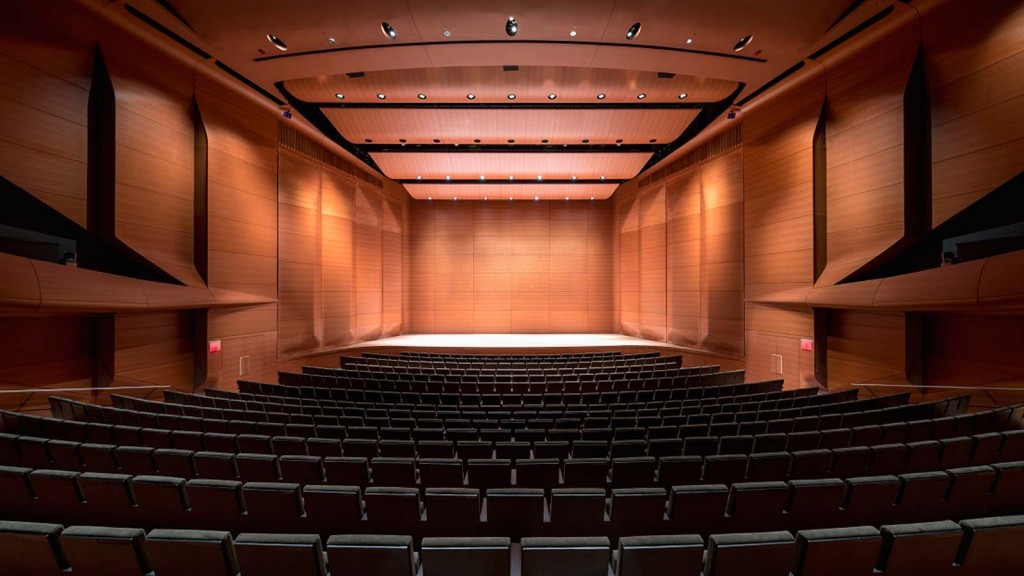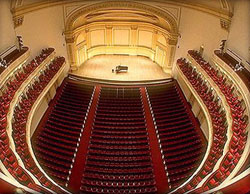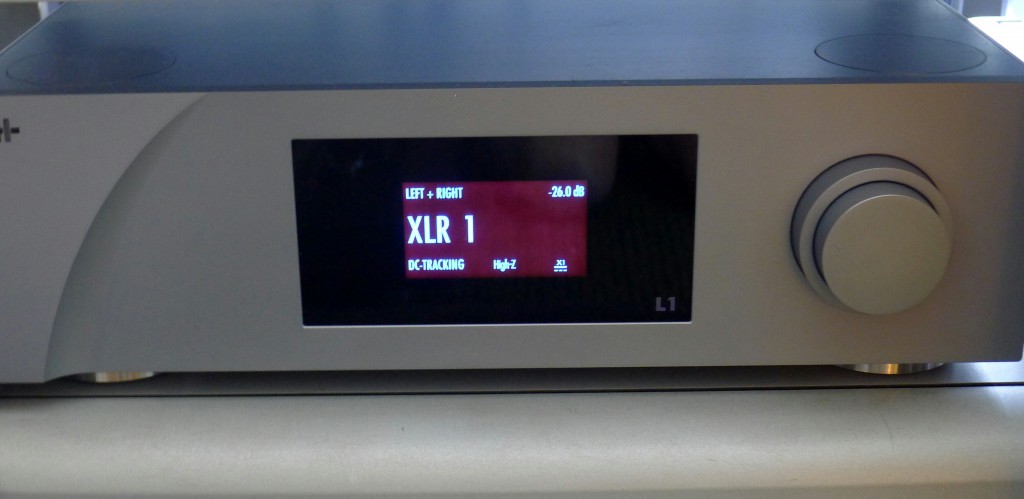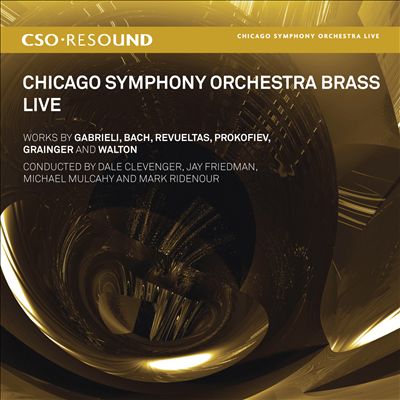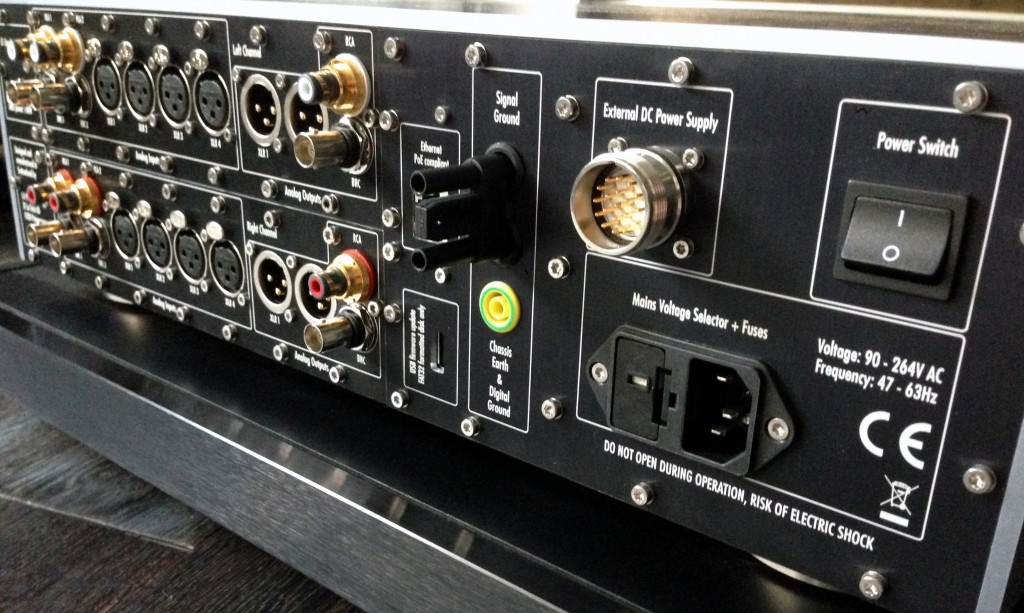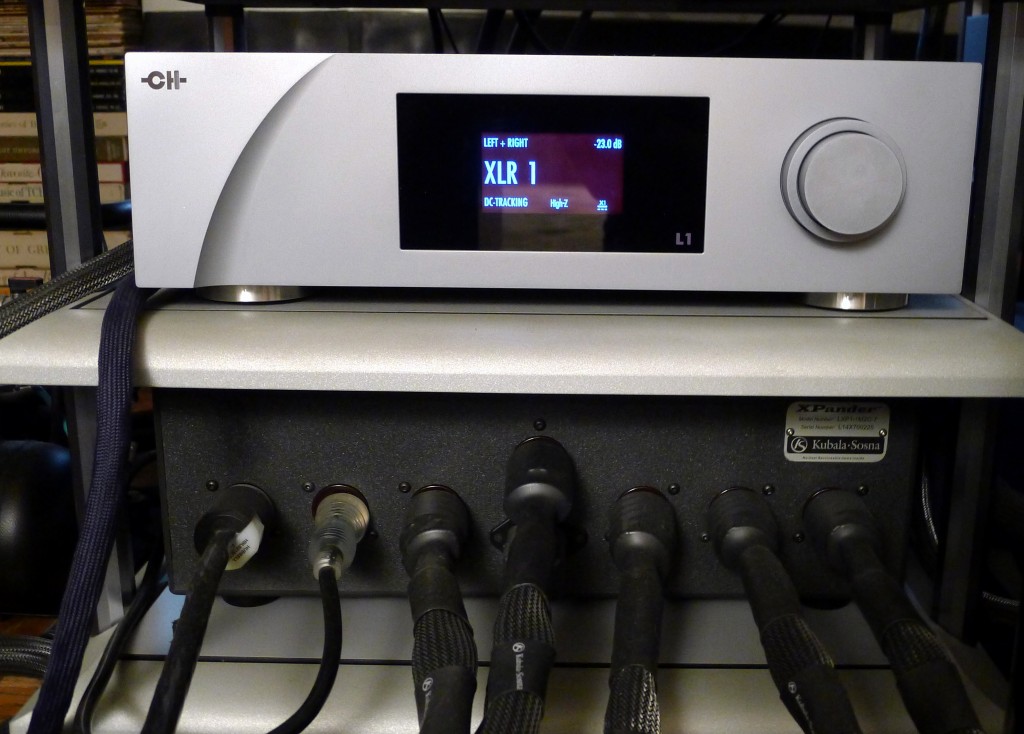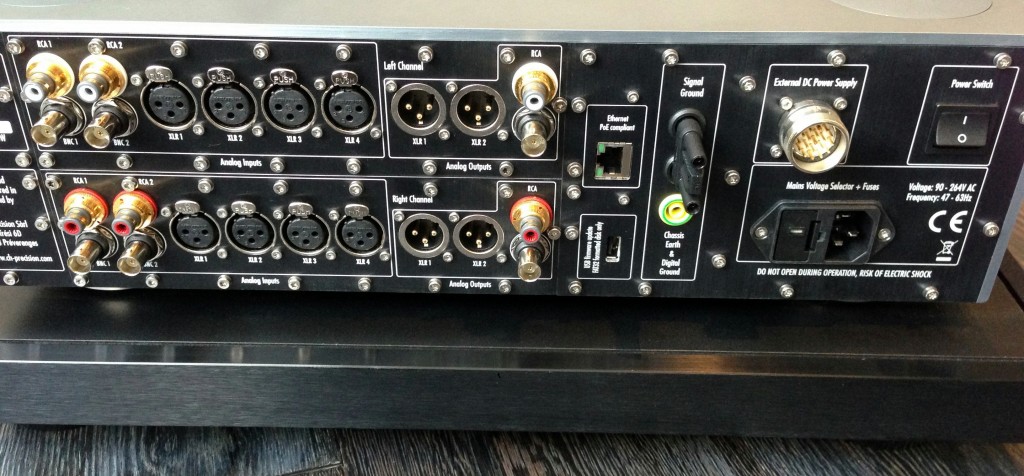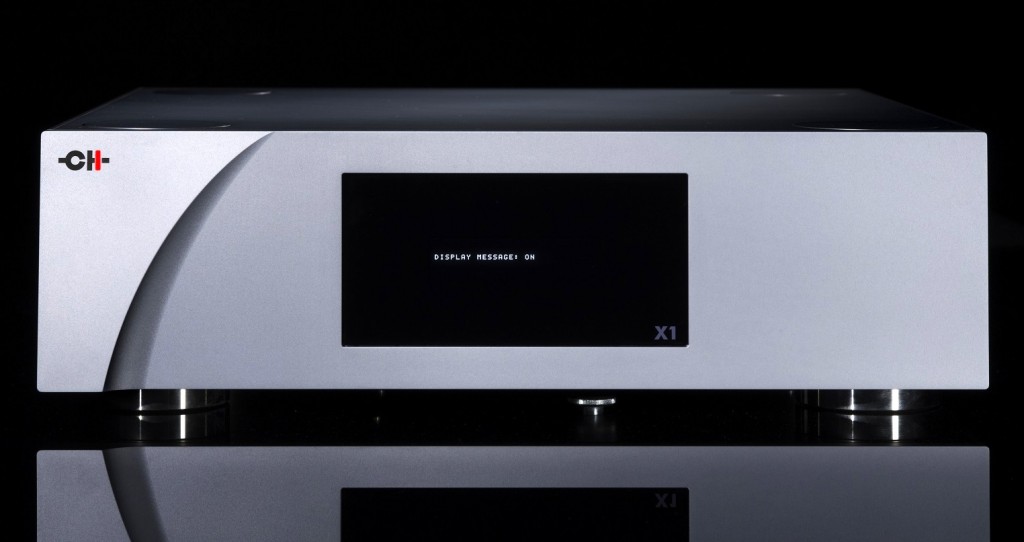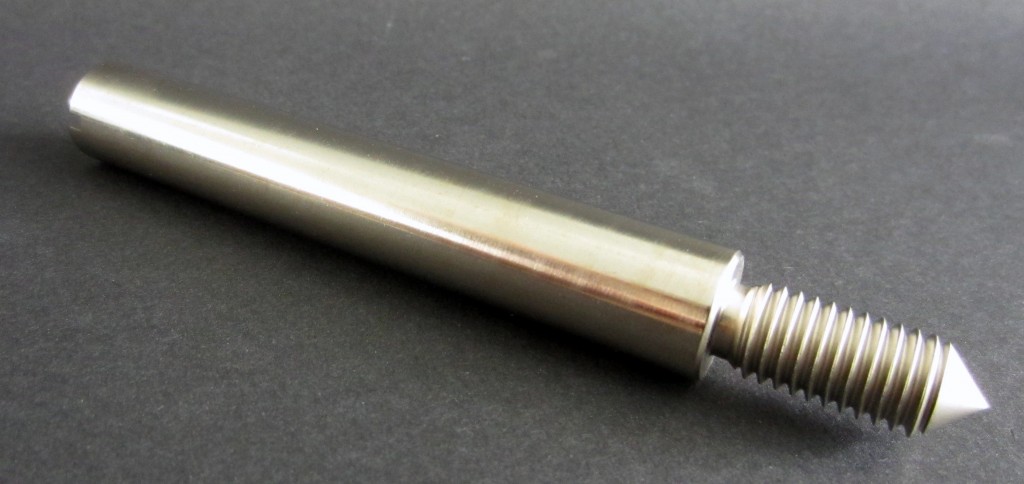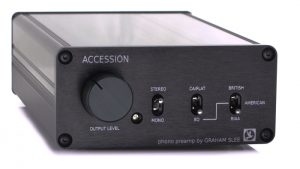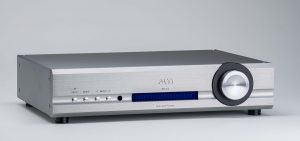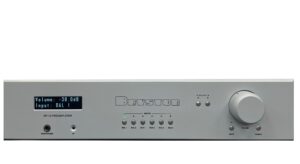The Truth Serum
We just arrived at Alice Tully Hall here in New York City on Saturday night, but I wasn't looking forward to the program. Yet another Dvořák's New World Symphony? C'mon, give it a rest, maybe trot it out every two years or so. Such was my gloomy mood as we settled into our seats.
The lights dimmed. Guest conductor Adam Fischer ascended the podium. Then, with the very first measures, all bets were off. Propelled by Mr. Fischer's fiery interpretation and the whiplash articulation of the Orchestra of the Age of Enlightenment, the performance held us transfixed, literally on the edge of our seats.
In the hush after the first movement, I whispered to Lynn with giddy excitement, "That's the sound of CH Precision." She nodded discretely.
At some point it occurred to me: It wasn't only the doings of the orchestra and the conductor. There was a third factor in play contributing mightily to the scintillating impression—the hall itself.
Alice Tully Acoustics
Alice Tully is a tweaked hall. It underwent renovation in 2009 and it is State Of The Art for acoustic engineering. Every aspect of its interior has been subjected to the best acoustic tools available.
Alice Tully Hall
It is most certainly not the sound of Carnegie Hall's Stern Auditorium, which is noted for its sweet, blended and refined sound. It is considered the gold standard by many and the venue of choice in New York City. Alice Tully is focused, incisive and exposed. It is rich without being bloomy, and it favors clarity and speed—qualities that make for excitement. Both venues reinforce the sound and lend it great body, rich timbre and smooth frequency response from any seat: both make it to my short list of top local venues.
Carnegie Hall
In the speculation of this amateur, two criteria can account for their vastly divergent acoustic properties—reverberation time and cubic volume.
The consultants in charge of the Alice Tully renovation aimed for a reverberation time of 1.4 to 1.5 seconds—the ideal decay for chamber music in their opinion, as befits the hall's major patron, the Chamber Music Society of Lincoln Center.
Carnegie has a measured reverberation time of 1.8 to 2 seconds. It seats 2,804 and is one of the larger spaces on the list of world-class music venues, while Alice Tully seats 1,086 and has a fraction of Carnegie's cubic volume of air.
For the record, the guru of professional acoustic consultants, John Meyer of Meyer Sound Laboratories, recommends the following reverberation times for different presentations: cinema or lecture hall (0.4 seconds); chamber (one second); theatre (1.4 seconds); concert hall (two seconds); and "sacred space" (2.8 seconds).
The point I'm making is to forget about the notion of a single, ideal sound. Good sound comes in many varieties. What's best for symphony orchestra repertoire is different than what's required for recitals and chamber orchestra concerts. For symphonic repertoire, I find there's nothing like Carnegie. For recitals and chamber orchestra concerts, I prefer Alice Tully. Keep in mind the old adage: the musician plays an instrument; the orchestra/ensemble plays the hall.
This idea is very relevant to home audio. You can model your rig like either one. Me? I'm replicating Alice Tully in my living room.
the CH Precision L1 Preamp
I had been thinking along these lines ever since the arrival of the CH Precision L1 Preamp and it all gelled, sitting in Alice Tully that night. The new preamp completes a CH Precision front end for digital source—the D1 SACD Player/Transport--> the C1 DAC-->the L1 Preamp. Only the amps (Audionet MAX's) are not from CH. I'm also using the X1 External Power Supply, an optional upgrade fitted on the L1. From this point on, when I refer to the L1 it should be understood I'm really talking about this entire CH front-end, D1/C1/L1/X1.
My grin began early with the first notes of Silvestre Revueltas' "Sensemayá" from Chicago Symphony Orchestra Brass Live (CSO Resound) and slowly widened into my biggest, most amused expression (although I've been told that's still not saying much.) It stayed that way 'til the piece ended.
The Real World Listening Room
Through the CH front-end this riveting work for brass, clarinet, string bass and percussion demonstrates magnificent clean power with the tightest, roundest bass ever. Fortissimos are punishing in their potency: dynamic range strains the capacity of my room.
It is apparent right away that the L1 isn't bloomy or euphonic—far from it. Instead it lays out a holographic blueprint of the soundstage, almost as if it was a sound architect. You witness how the pieces of the puzzle are assembled, one by one, as the soundstage is realized. All of the musical lines are clear as day and control is pervasive. It's not just the bass—the tight grip extends across the frequency spectrum. Nothing is left loose or wishy-washy; ambiguity is dismissed. Transients zip around, evidencing hyper speed and crisp articulation. It's as if the foundation of the score was laid bare.
I almost wrote, "It's as if the skeletal foundation of the score was laid bare," but I hastened to expunge that word and relax your concerns, because it sure ain't no skeleton. The images on the CH stage are fully-fleshed and appear healthy. That's the beauty of the CH sound.
When everything is cooking, that is, with a quality recording like "Sensemayá" (these days it must be SACD), the hall is hyper realistically recreated in your room and it can give chills and goosebumps because of its startling authenticity. Now we were at home and I whispered to Lynn, "It sounded just like that in Alice Tully."
But if the source has discrete imaging and unnatural gaps between instruments, as is often the case, that's how you will hear it. The spaces between instruments may be left profoundly empty. If the recording didn't capture ambience, don't look to the CH to manufacture it
It ain't what's in your head
So, here we come to a juncture. Some audiophiles take issue with this. They want everything to sound great regardless. They don't take into account that recording quality can vary all over the map, and if what they hear doesn't measure up to some ideal in their head, they call out the component or the system.
Hey, this is called High Fidelity, right? I hear those source issues as well as anybody. But I want the component to reveal it, for better or worse. The last thing I desire is the component to overlay the source with a heavy footprint. Yeah, it will hide the defects but, by the same token, everything will have the same gloss. Such a component will never scale the heights and you will never hear what a truly great recording can do. IMHO, the complainers are blaming the system for doing its job well.
All machines impose a footprint to some degree; I suppose it's inescapable. I happen to think a tad of euphony may not be a bad thing, as so many CDs are poorly engineered. I don't mind a dollop of romance on my Bartok to soften harsh strings. But major repair behavior is another story.
Timbre
Want to make a solid-state component suffer? Just feed it a program of classical strings. There is something about the complex, rich texture of these instruments that is as difficult to voice with a solid-state component as it is to describe on paper. Whether due to overtones that are AWOL, the injection of odd-order harmonics, or plain old mechanical artifacts, chances are wooden string instruments sound annoyingly artificial. Tube gear has always fared better with them.
Some folks are keenly sensitive to this distortion. They get a queasy feeling in their gut. (At least that's what they report. Lynn is one of them, but it doesn't happen to me.) Well, I can tell you, not only did the gut of those sensitive souls remain unperturbed; timbre is actually a CH strong suit. While you won't hear inordinate bloom, you will discern very fine micro-level differences among like-voiced instruments. The CH front-end can do this because it has a vast timbral palette at its disposal. The only other product with similar timbral veracity is the new TARA Labs Zero Evolution interconnects.
The L1 is decidedly in the neutral camp, but the CH designers are not fundamentalists about it. They create components that are respectful of the musical virtues of body, tone, timbre, and flow.
Cosmetics
I wonder if it's coincidental that the best stuff coming out of Switzerland these days shares a certain look. To my mind, the two brands that define Swiss luxury are Soulution and CH Precision.
The L1 shares the same rather large enclosure as the rest of the CH front-end components, including the A1 Amplifier. Aesthetically speaking, the chassis is a thing of industrial beauty, with softly squared-off corners, no visible screws (except on the back), and silky action of the large control knobs to the right of the display window. The front, side and top of the satiny chassis are made of high-grade aluminum alloy, while the base plate is steel.
This is next-gen gear with an on-board, sophisticated user interface offering a staggering range of options. You configure the L1 via a large, easy-to-read display window on the front panel providing access to the menus. You can even personalize the color of the text in the display window.
Although the back panel has a full complement of In/Out jacks supporting both XLR and RCA, the L1 is fully balanced and performs optimally in that mode. There are a couple of proprietary slots—extra functionality can be added at extra cost.
Installation
Fresh out of the box, the L1 already hints at what's to come, but it's a bit stiff and etched. It needs about two weeks to limber up. Then you'll flip the switch and…Wow! What just happened? Just like that, the stiffness and dryness evaporate. Make sure you allow sufficient burn-in time during your audition.
As mentioned above, for most of the audition I was running the CH front end into my Audionet MAX monoblocks. Kubala•Sosna Elation! cables were employed throughout, both single-ended and balanced interconnects, power cords, and the new XPander Power Distributor.
Comparing the L1 to my reference Trinity Preamp revealed fundamental differences. The Trinity Preamp is notable for its refinement. However, it paints with a broad brush to deliver that and, consequently, is not as resolving or transparent. It doesn't have the same degree of fidelity to the source. As of this writing, the insight provided by the L1 is unparalleled. It places you in intimate alignment with the source; it is like a truth serum.
the X1 Power Supply Upgrade
CH offers a power supply upgrade called the X1 that can be used with the L1, C1 or D1. It comes in the same, full-size chassis but, unlike most power supply upgrades which employ expanded banks of capacitors, the X1 takes the alternate, more difficult route of using a pair of very large, costly, transformers. It gets quite warm after a few hours, like the L1 used to get warm. Since connected to the X1, the L1 runs cool. In effect, the heat moved over to the X1. The same heat transfer happens when the C1 is connected to the X1.
As I found out recently with the Audionet PAM G2, these external power supplies are serious business. The X1 injects huge amounts of dynamic horsepower. Just about everything gets better—very worthwhile and highly recommended.
The X1 comes fitted to power a single component. However, with the purchase of a second regulator board, it can engage two components. That's how I had it installed. Inquire from your dealer for more information.
CH Spike
The CH Vibration Suppression System
Every CH component has circular steel footers with a soft elastomer ring in each corner on the bottom, so the L1 can sit on delicate surfaces. But you will probably want to optimize isolation by installing the Vibration Suppression System (included).
First, unscrew the footer covers on the top plate. Then insert one of the hardened steel shafts. These shafts are as tall as the component and have spike tips on the bottom that fit into little carbon polymer support discs. They are height-adjustable and mechanically ground the entire chassis, while serving as vibration evacuation channels.
After the steel shafts are installed and leveled, you replace the footer covers: voila, they are concealed and the satiny finish is intact. You have to see this in person to appreciate how beautifully it is designed and implemented.
Conclusion
CH Precision hit the US market running, garnering press accolades and show awards, and in short order ascended to the apex of the Reference Class rankings. The new L1 Line Stage, as well as the entire CH product line I've been privileged to audition, left no doubts as to that assessment. This gear is the leading edge of innovation and design. The reviewer's task became merely to describe how it sounds; I won't even attempt to cover the engineering involved.
The L1 puts me in mind of Alice Tully Hall here in NYC, one of the best venues in town. However, that's quite a bit different than a seat in Carnegie Hall. In the end, it comes down to which acoustic you would rather experience.
Extremely well-articulated and exposed, very neutral, the L1 made for dramatic, at times even scintillating, listening sessions. It brings you closer than ever to the source, delivering more truth than you're probably used to. Be prepared.
I can't let the L1 go back to the importer. This guy will become my new reference.
L1 Preamp
$32,975
X1 External Power Supply
$14,975
CH Precision
Importer information:
Audioarts





